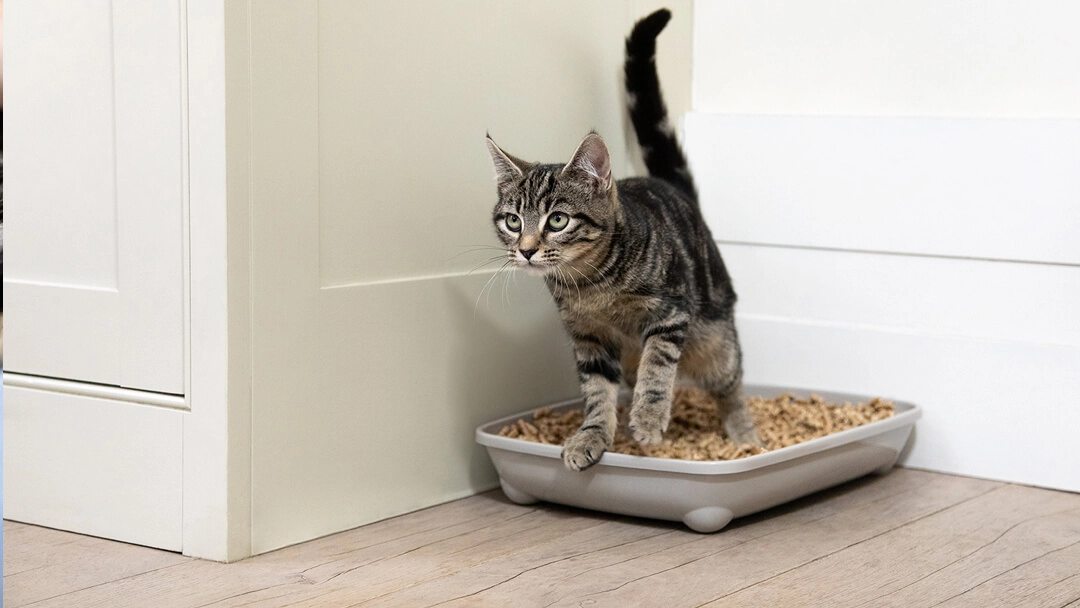A litter box may seem like a simple product to pick up for your cat, but many different options must be considered. Choosing the right one will ensure your kitten is comfortable in it until they reach adulthood. Kittens need a box with low entry points to avoid feeling vulnerable while doing their business. They also need a box that is large enough to prevent them from having to jump or climb to get inside it.
Accessible
Kittens have short legs and need a litter box low to the ground. Several litter boxes on the market have high sides that can be difficult for a kitten to climb into or jump over. You can avoid this problem by using a litter box with lower walls or cutting a regular storage box into a low-sided litter box for your kitten. A litter from Chewy.com that’s easier to dig and cover will make it more likely that your kitten will use the litter box, primarily if you use plant-based rather than clumping litter. Clumping litter has additives that can swell and cause blockage in the digestive tract of young cats and kittens. Plant-based litters are less expensive and better for the health of your kitten. If your kitten begins to urinate outside the litter box, try enzymatic cleaners to remove odor and discourage her from returning to that area. Positive reinforcement and treats can also encourage your kitten to return to her litter box. Get multiple litter boxes for your kitten and adult cat. The general rule is one litter box per cat plus one. The litter box size should be longer than your cat from head to extended tail and broader than her height at the shoulders.
Comfortable
Many cats do not like being enclosed in a covered litter box. This is because cats are very aware of their surroundings and may feel cut off from the world when they go to the bathroom. If your kitten struggles to use the litter box because of this feeling, they may develop anxiety or even avoid using it altogether. Covered boxes can also trap odors, making them uncomfortable for your cat. This can deter them from entering the box or make it harder to find their way out if they get stuck inside. Covered litter boxes can also be intimidating for younger kittens or older cats with mobility issues, as they may have trouble getting in and out of them if the sides are too high. However, if you’re concerned about odors, you can always use an open litter box. Keep it ultra clean, scooped frequently, and washed every one to four weeks, depending on how dirty the box gets. And remember, if your kitten is having problems using the box, don’t scold them – this will only cause them to dislike it even more. Instead, try offering them treats and positive reinforcement. This will help them learn that going to the bathroom is good.
Durable
Having a litter box that can withstand the rough and tumble of cat elimination. Many litter boxes, especially self-cleaning ones, are small and may not have enough surface area for cats to eliminate comfortably. This can lead to them burying their waste outside of the box, which is a normal behavior they have but that you want to discourage. If your cat eliminates outside of the litter box, gently encourage them to return to their box by speaking cheerfully and directing them. Never rub your cat’s nose in their elimination, strike them, or swat them; these actions can lead to fear and anxiety about elimination. If they continue to eliminate outside the litter box, talk to your veterinarian about the problem and see if any health issues can cause them to be eliminated in inappropriate places. Kittens and aging or disabled pets struggling to jump into high entry points may need a litter box with low sides. A litter box with low entry and exit sides may help prevent litter tracking and other problems associated with jumping into the litter box.
Large Enough
When selecting the litter box for your kitten, consider their size. Kittens are tiny, so they need a litter box that is large enough for them to move around in and avoid feeling cramped. Choosing the correct litter box for your kitten will help ensure they learn to use it properly and won’t abandon it due to lack of space. Kittens typically use their litter box as babies, mimicking their mothers’ behavior and following instincts. However, they may need extra encouragement to get comfortable using their litter box. The easiest way to do this is by placing the litter box in a quiet room, closing the door, and staying with them as they investigate it. If they show signs of wanting to go into other areas of the house, such as sniffing at the floor, circling the room, or looking for a private area, calmly carry them back to the litter box and encourage them to use it again. When choosing a litter box, remember that cats need to be able to turn around in the box while eliminating and that the entrance should be low so they can quickly get in and out of it. Some cats prefer top-entry litter boxes, but these can block their view of the surrounding environment and trap odors when not regularly cleaned.









Leave a Reply